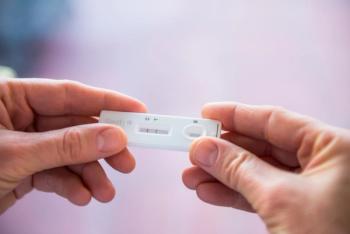
Adverse birth outcomes from PFAS
In a recent study, impacts on birth weight and gestational age were linked to perfluoroalkyl and polyfluoroalkyl substances only for mothers in the lowest percentile range.
According to a recent study published in JAMA Network Open, only mothers under the 25th percentile for prenatal delivery or plasma folate levels are at risk of adverse birth outcomes because of prenatal perfluoroalkyl and polyfluoroalkyl substances (PFAS).
PFAS exposure may come from food packaging, nonstick cookware, cosmetics, fire-fighting foams, and other products. These synthetic chemicals have been identified in multiple populations worldwide and have been associated with adverse reproductive events and health outcomes.
There is little data on how prenatal PFAS exposure impacts various populations despite associated risks of decreased gestational age, low birth weight, and preterm birth. Researchers have hypothesized folate may interact with PFAS because of shared common transporters.
To determine the impact of prenatal folate status on PFAS exposure and birth outcomes, investigators conducted a study using mother-singleton pairs from a US prebirth cohort called Project Viva. Participants were recruited from April 1999 to November 2002 during their first prenatal visit, and data was evaluated from May 24 to October 25, 2022.
Questionnaires were completed to obtain reproductive history, sociodemographic characteristics, nutrient supplementation, and early pregnancy diet.Of the 1400 mother-singleton pairs with data on PFAS, folate intake, and birth outcomes, 898 had quantified plasma folate concentrations.
A nonfasting blood sample was also received from participants at recruitment, then measured at the Division of Laboratory Sciences at the Centers for Disease Control and Prevention. Measurements were gathered for 8 PFAS compounds.
Diet from the previousmenstrual period of index pregnancy to study recruitment was analyzed through a food frequency questionnaire. Supplement intake data in the 3 months before index pregnancy identification was also obtained during interviews at recruitment.
To measure pregnancy dietary folate equivalent (DFE), investigators multiplied, “the frequency of intake of standard portion sizes of each food item or supplement times its folate or folic acid content, according to the Harvard nutrient composition database.” DFE intake was also adjusted for total energy intake.
Medical records were consulted for birth outcome data, including birth weight and date of birth. Investigators obtained the date of last menstrual period and ultrasonography to determine gestational age.
Covariates included maternal education level, paternal education level, maternal age, maternal race and ethnicity, and annual household income. Smoking status was also reported, with women categorized as ever smokers, former smokers, or early pregnancy smokers. Parity, infertility history, and breastfeeding history were also included.
Of the 1400 mothers included in the analysis, 73.2% were White, 69.1% had at least a college level education, 58.6% had an annual household income over $70,000, 62.8% planned for pregnancy, and 68.4% reported periconception folic acid supplement use. Participants were aged a mean 32.21 years.
Preterm birth was reported in 7.1% of participants and low birth weight in 4.6%. The subpopulations displayed similar characteristics to the full population. Increased racial and ethnic diversity, lower education status, increased odds of prenatal smoking, and decreased use of periconception folic acid supplements were found among women in the lowest quartile.
Of the 8 PFAS compounds measured, 2 were excluded from the analysis. The remaining 6 were found in over 99% of the samples, with similar distributions between the study population and subpopulation. Investigators measured a median plasma folate concentration of 18.92 ng/mLand a median pregnancy DFE intake of 936.2 μg/d.
Lower birth weight because of plasma concentrations were only observed among women in the lowest quartile of plasma folate concentrations. Women with the lowest DFE intake and higher perfluorooctanoic acid concentrations were more likely to have offspring with a low birth weight, while those with increased perfluorononanoate concentrationswere more likely to have offspring with decreased gestational age.
Overall, changes in birth weight and gestational age from PFAS exposure were only found in mothers with prenatal dietary folate intake or plasma folate concentrations in the lowest quartile range. Investigators concluded folate may, “be used as a PFAS prevention measure during preconception and pregnancy.”
Reference:
Zhang Y, Mustieles V, Sun Q, et al. Association of early pregnancy perfluoroalkyl and polyfluoroalkyl substance exposure with birth outcomes. JAMA Netw Open. 2023;6(5):e2314934. doi:10.1001/jamanetworkopen.2023.14934
Newsletter
Access practical, evidence-based guidance to support better care for our youngest patients. Join our email list for the latest clinical updates.




